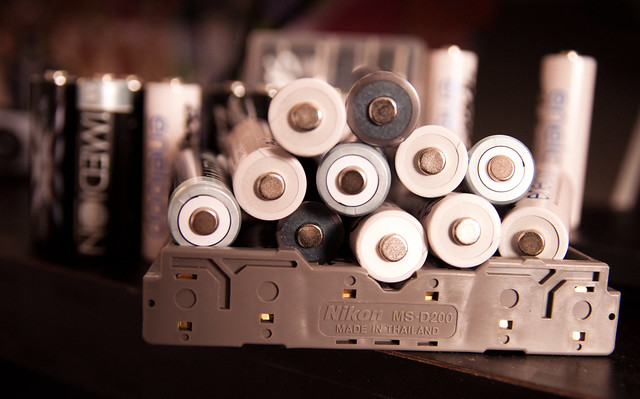Analysis of lithium battery price trend
Aug 16, 2019 Pageview:1332
The global lithium-ion battery market in 2018 reached as much as $ 28.5 billion. The industry is expected to go beyond the $53.8 billion mark, by 2024, with a compound annual rate of 11% for the 2019-2024 period.
Compared to its predecessor the nickel-cadmium, lithium-ion technology currently offers many important advantages. Lithium-ion batteries offer a considerably higher energy density that can power electronic devices for longer periods. This among many others is a primary factor that has led to its accelerated market growth.
Car manufacturers and policymakers are more than ever convinced that the cars of the future will be (partially or fully) powered by electricity. However, there is still no consensus on the timing and timeliness of this transition, mainly because of differing views on the current and future costs of the lithium battery and the performance of these batteries as well.
The increase and acceptance of electric vehicles are also forcing car manufacturers to rethink their role in the supply chain of automotive products, for example, there is a serious consideration for providing and training more in-house experts on the knowledge of batteries. This is in contradiction with one of the major trends of the past 30 years of car manufacturers. Eliminating the misunderstandings about lithium-ion batteries is now more than ever becoming important.
In December of 2018, the ninth edition of BloombergNEF battery price survey was released, and an 8-year data was studied (beginning from 2010). This annual price survey has become a benchmark in the industry and has shown a fall in prices which have been a very remarkable one. The average pack of a lithium-ion battery (volume-weighted) decreased by 85% between 2010 and 2018, at an average of about 176 USD per kWh
Besides, low-maintenance lithium-ion batteries and the low self-discharge rate proves that there are more benefits in using the Lithium-ion battery other than the other types of batteries available in the market. With the development and innovations of the new battery variants, lithium-ion battery technology now can be used over a wide range of needs in the market, ranging from electric vehicles or the plug-in hybrid version to powering smartphones. This, in turn, has contributed to the growing global demand for lithium-ion batteries.
Aside from the wide range of usage, there is a continuous demand for energy-efficient, eco-friendly and environmentally friendly batteries. Also, market growth will be further accelerated by the stringent regulations adopted by various governments around the world to reduce pollution.
A behind the scenes take on lithium-ion battery prices
The two main battery technologies used in electric vehicles are lithium-ion batteries and lead-acid batteries. The production of lithium-ion batteries is more expensive. The total cost of the production of this battery is about 40% higher than that of the nickel-metal hydride battery. This battery requires a sort of built-in computer circuits to manage and ensure that the voltage and current are within safe limits. The circuitry is what makes it as expensive as it is.
The Lead-acid batteries, on the other hand, are the cheapest batteries available to users, both in terms of initial cost and cost per kWh.
As lithium-ion batteries become increasingly used by many electric vehicles and are the most expensive alternative, it is interesting to see how the cost of lithium-ion batteries would evolve in the future.
From a cost of around 1000 USD per kWh in the year 2010, the cost of Li-ion batteries in 2018 has fallen to a little above 200 USD per kWh, this drop is exceptional, an 80% drop in only 8 years.
What could have caused such a dramatic drop in price? Have there been a major technological breakthrough? Not at all.
The primary reason for this reduction in cost is simply because of what is known as economies of scale. From almost no electric vehicles in the world (aside from the Toyota Prius, which was, in fact, a hybrid electric vehicle), there were 2 million electric cars sold worldwide in 2018 (the top 3 sales were made by Tesla –the Model 3, Nissan Leaf and the BAIC EC Series). In 2017, the sales of electric cars were about just a million. In was about 5 million electric cars in total on our roads, this is still a far cry to the number of regular petrol cars, but that represents a much higher figure than it was before then –which is a welcome development.
As a result, the prices of li-ion batteries have dropped due to the much larger quantities of batteries being produced in the numerous factories around the world.
So as it stands, what does this hold for the future since there is an expectation for a significant improvement in the numbers of electric vehicle sales?
To better understand what is possibly going to happen, let's see what the number of electric cars will look like in the future. According to a report from the EU, at least 50 million electric cars will be on the roads by 2028, this could even increase to an incredible 900 million electric cars by the year 2040, at which point there is an expectation for about 2 billion cars in total on the road. Consequently, by 2040, electric cars could account for about 50% of all cars on the road, rising to an all-time high from just a meager 0.5%, by the end of 2018.
So this growth of electric cars is projected to have a huge impact on the cost of Li-ion batteries, decreasing their prices and making them more accessible.
In the nearest future, the costs are expected to fall below $200 in 2019 and even continue to decline with time and an increase in competition between manufacturers. The price is expected to reach a magic number of about 100 USD per kWh between 2025 and 2026.
How to analyze lithium battery price trend
The best way to analyze the Li-ion battery price trend is to keep up with the battery market and follow websites like that of large power for updates and compare prices between the past, current, and future.
- Prev Article: High Endurance Rechargeable Lithium-Ion Battery
- Next Article: Do you know about lithium ion battery fire bag?
Leave Message
Hottest Categories
-
Hottest Industry News
-
Latest Industry News











